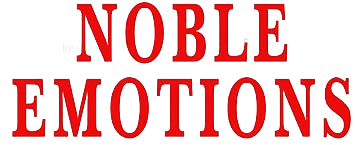Phasmophobia – Fear of Ghosts
Time taken (25 minutes) at the end of a training session
In 2018, I organized a training workshop on the Law of Attraction, levels of consciousness, and brain frequencies for bank officers. I shared the adverse effects of lower frequencies on human attitude, highlighting those frequencies lower than 20Hz – 35Hz can attract diseases and supernatural entities. I also
discussed the ancient belief that:
Jinn and supernatural entities, witches, and ghosts are afraid of salts, sage leaves, corroded (or rusted) iron, and wolves.
During the session, a senior bank manager shared his fear of supernatural entities. He had been grappling with this issue for several months. Despite seeking help from psychiatrists, energy healers, psychologists, and even shamans, his problem persisted. He also admitted to a fear of the dark, often imagining dark figures, shapes, or shadows around him. His fear was noticeable, and he recounted a recent experience where he had to switch on all the lights in his hotel room to cope with his fears. I assured him that his fear would diminish by the end of the evening.
I explained that darkness itself doesn’t inherently contain fear; instead, it brings about the chaos that confuses sensory perception, leading us to seek light to target physical objects. Darkness serves as a beacon, signaling a need for direction from uncertainty to certainty. To begin therapy, I asked him to visualize the color, tone, tempo of voice, height, width, shape, and size of the imagined entity’s face. He described it as dreadful due to its darkness.
Transforming Fear: A Visualization Technique for Emotional Relief
Encouraging relaxation through deep breathing, I praised his efforts from the previous night. I instructed him to imagine and switch on the “first light switch,” followed by the remaining switches with a fifteen-second gap. Gradually, as the light increased, his visual senses began to adjust, and I had him imagine the entity’s face in terms of its shape and size. I guided him through exhaling ten times, holding his breath, and envisioning the look as a comical cartoon character. We gradually reduced the size of the image until it resembled a thumbnail. He confirmed that the picture had changed and become smaller. Further, I had him replace specific facial
features with those of a laughing cartoon character. By taking ten deep breaths, he experienced a shift in his emotions.
To address internal voices, he focused on listening to them. Suddenly, he became alert and uneasy, with his internal auditory representation hindering his energy flow. He mentioned hearing a heavy tone with a slowly approaching voice in his ears. Acknowledging his dedication to his progress in a short span, I suggested
lowering the volume as one would for a radio or T.V. Through a series of deep, quick exhale breaths, he felt the impact of the voice diminishing. I then guided him to replace the voice with his mother’s and concentrate on her voice during inhalation for ten breaths.
Therapeutic use of gustatory representation:
When discussing taste (gustatory representation), he mentioned feeling nauseous—a chemical effect of deeply rooted fear. I advised him to hold his breath and visualize taking an herbal medicine with a mint flavor, which provided a soothing and healing taste. This led him to feel lighter and more comfortable. Additionally, he was encouraged to focus on the taste of his favorite food, Biryani, resulting in an elevated feeling.
Therapeutic use of alfactory representation:
Regarding fragrance (olfactory representation), he described it as similar to passing an unhygienic dairy farm with a pungent smell. I prompted him to distance himself from the dairy farm and imagine entering a room filled with the subtle scent of red roses. Following this visualization, he experienced relief.
Breaking the Chains of Fear: A Journey Through Iron, Salt, and Wolves
The climax arrived when I instructed him to imagine moving into an isolated hut in a lush green jungle. The shed was constructed with uncovered iron bars that had eroded over the years due to the absence of human presence. I asked him to feel the temperature—hot or cold—and to taste the rust. I questioned whether it was
salty, bitter, sweet, or sour. Finally, I prompted him to visualize wolves and listen to their sounds. As I uttered these sentences, the bank manager let out a deep sigh of relief. He reported feeling a sudden wave leaving his body and tears of joy streaming down his face. He had found relief—believing in the power of iron, salt, and wolves had overcome his fear of supernatural entities.





